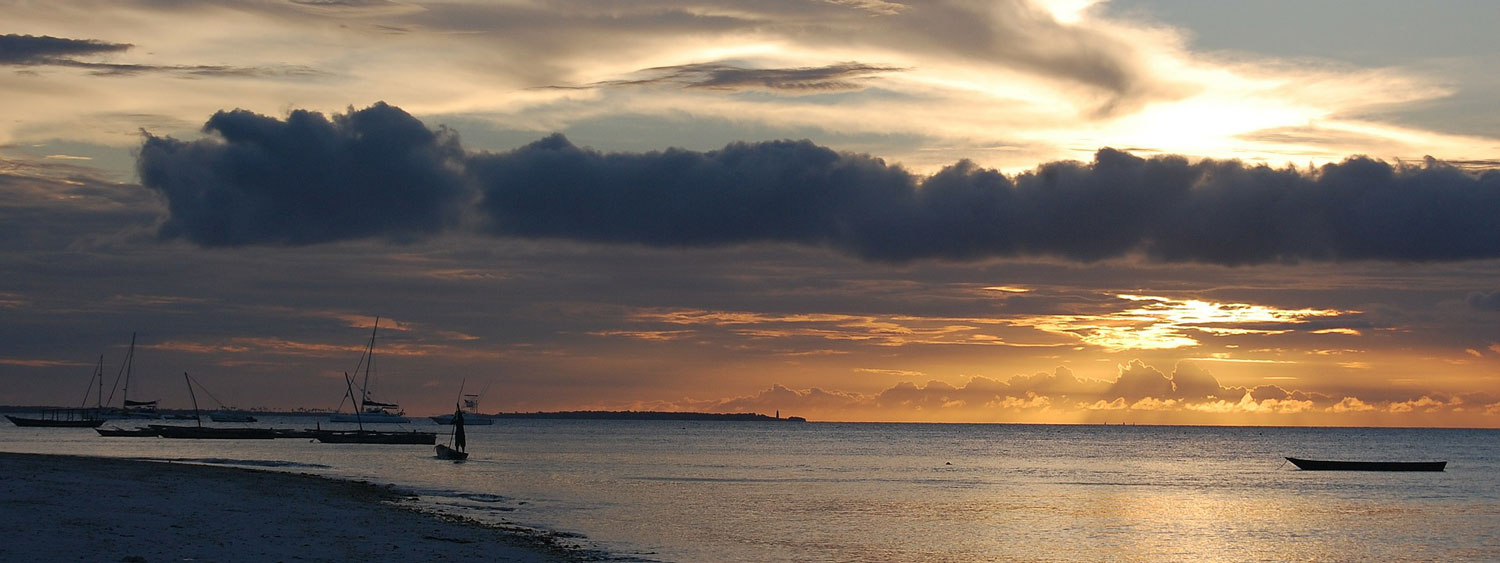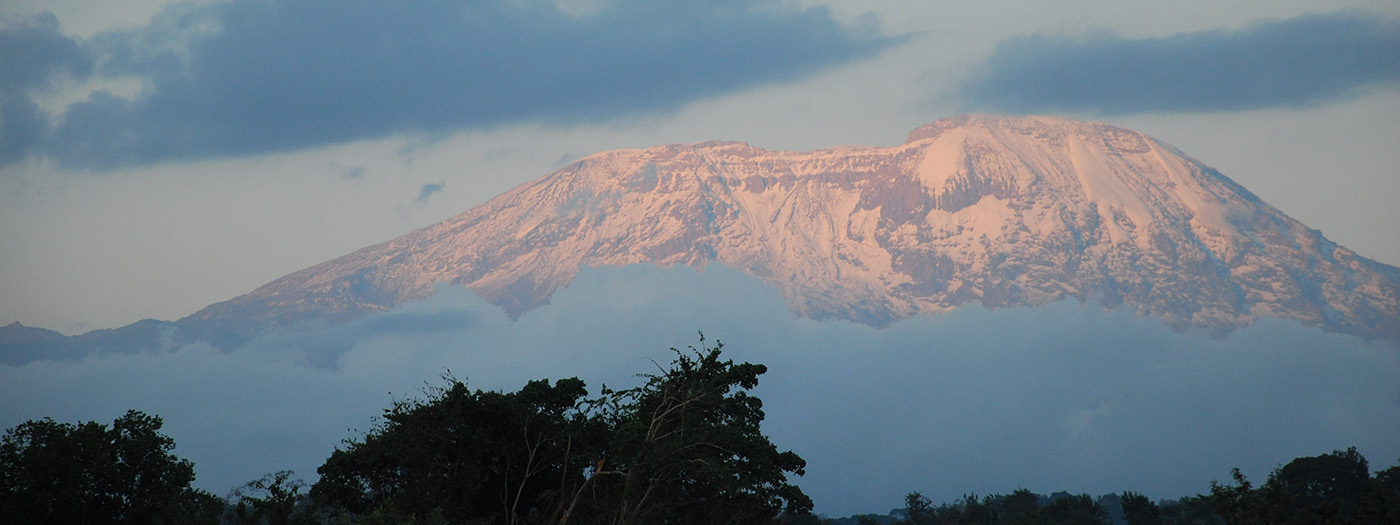Serengeti National Park is one of the most beautiful national parks in Tanzania and all of Africa: the best park for the Great Migration Safari.
Serengeti National Park is considered the most famous park in all of Africa, with over 14,000 sq. km of savannah inhabited by an extraordinary fauna unique in the world.
Inside the Serengeti National Park, it is very likely to spot the Big Five and the great African mammals up close, but the most evocative spectacle you can witness here is certainly the Great Migration.
The name of the park derives from the word "siringet" which in the Masai language means "plain without end" and this will be the feeling you will have while admiring the park from the Naabi Hill viewpoint near the main entrance (Naabi gate).
The park is the main tourist attraction in Tanzania along with Kilimanjaro and Ngorongoro Conservation Area, one of the favorite places for game drives and birdwatchers.
In 1981 Serengeti National Park with the Masai Mara reserve (in Kenya), the Ngorongoro Conservation Area, and other private reserves, was inscribed in the UNESCO World Heritage Site.
Serengeti National Park
When you think of Africa’s majestic landscape, you are likely imaging the great Serengeti. The Serengeti National Park serves as the first and most visited in Tanzania, offering the yearly migration of wildebeests, gazelles and zebras. Over 200,000 zebra and 300,000 Thomson’s gazelle join one million wildebeest on the journey of 1,000 kilometers (600 miles). This three-week trek serves as breeding season with over 800 calves born each day. This means that it is survival of the fittest as the wildebeest form a range 40 kilometers (25 miles) long to blaze their way across the territory of predatory crocodiles as they charge North. Alas, this is all a part of the circle of life in the Serengeti.
Aside from the activity of the migration, the Serengeti offers the most thrilling gameviewing, including buffaloes, elephants, giraffes, elands, topis, kongonis, impalas and Grant’s gazelles. However, these animals must all be alert for the predators, such as the lions who prey in prides in the grasslands, leopards in the acacia trees along the Seronera River alone, cheetahs who hunt in the savannah and African jackals.
The smaller creatures of Serengeti National Park are just as diverse as the larger ones. It offers agama lizards, rock hyraxes, dung beetles (over 100 recorded species) and birds. With over 500 bird species noted, they range from the large ostrich roaming around the savannah to the predatory secretary bird in the plains to black eagles flying over the Lobo Hills.
Part of the magic of the Serengeti is the beautiful backdrop. With golden sunrise across the savannah, it gives the whole horizon the image of perfection. During the rainy season, the gold illusion turns into green, reflecting the growth of the grass and accompanying wildflowers. Sprinkled in the panorama are hills, rivers and trees to offset the vast landscape.
While the Serengeti National Park has many, many visitors, it is so large that you will likely not come across another party as you observe the wildlife.
About Serengeti National Park
- Size: 14,763 square kilometers (5,700 square miles)
- Location: 2555 km from Arusha, bordered to the north with Kenya and to the west with Lake Victoria.
- Famous are the Serengeti kopjes, rocky islands that dot the plain, where many animals find shelter. The most famous are Simba Kopjes, Moru Kopjes and Masai Kopjes which you can visit during the photo safari.
- The Serengeti National Park Map.
The climate in the Serengeti
It is possible to do game drives in the Serengeti at any time of the year thanks to the abundance of resident animals in the savannah. If you go between December and March you can witness the Great Migration in the Ndutu area when the animals move from North to South.
Instead, between July and October, you will follow the animals that go up from the South to North in the Great Migration summer path through the areas of Lobo, Bologonya and Mara.
The rivers of the Serengeti
Surely you have seen some of the Serengeti’s rivers on National Geographic and other TV programs. The Mara and Grumeti rivers are full of big crocodiles, the wildebeest and zebras Great Migration crosses those rivers every year.
The Seronera river gives its name to the central area of the Serengeti Park and the Mbalageti river flows in the Western side of the park.
The Grumeti River
Safaris in May, June, and July take place between the Central Serengeti and the Western Corridor looking for the Great Migration. Between the end of May and mid-July the Great Migration crosses the Grumeti River, it is not very difficult cross, the banks of the river are not steep and the water is shallow.
The real pitfall is the crocodiles who wait for this moment for months and hide in the river waters to ambush the animals that approach to drink or to cross.
The Mara River
From July to October in the North of the Serengeti the Great Migration crosses the Mara River, the cross is very difficult not only for the crocodiles but for the very strong stream and the steep banks of the river. Many animals die crushed by others or fall ruinously during the descent or ascent of the river.
Herds can take hours to make up their minds to cross, finding the courage to face the dangers and pitfalls that await them.
The Seronera River
The Seronera River is the most famous and visited, just over 30 kilometers long, located in the Central Serengeti. Several games drive meander along the river with excellent chances of spotting predators such as lions, leopards, and cheetahs.
The Mbalageti River
The Mbalageti River is located in the Western Corridor, a little-visited area of the park, where we find the Great Migration in May and June. The river is an important source of water for the residential animals of this area.
The Serengeti Plain
The Serengeti Plain is the ideal place for game drives in search of the "Big Fiv", visibility is excellent for sightings of animals that are hardly hidden in the vegetation.
At Naabi gate, the main entrance, we recommend going up the panoramic hill to see the immensity of this endless plain of over 14,000 sq. km and take photos as unforgettable memories.
The plain is dotted with acacia woods, rivers, and pools of water. The altitude varies from 900 meters to 1850 meters, the climate is always pleasant. The Kopjes, small granite hills where many animals find refuge, break the monotony of the plain.
The most famous are Moru Kopjes, Simba Kopjes and Masai Kopjes.
The Great Migration crosses the boundless plain of the Serengeti every year, there is no shortage of all the other typical animals of the African savannah such as elephants, giraffes, lions, leopards, cheetahs, etc.
The most famous areas are Lake Ndutu, Seronera, the Western Corridor and Mara Region.
Serengeti Camps and Lodges
It is advisable to stay in the park for at least 2 nights, to have time to admire the natural wonders, the fauna and above all the impressive herds of the Great Migration.
It is possible to stay in mobile and fixed tented camps or luxurious lodges for a thousand and one nights, if you have the spirit of adventure, you can also camp in mobile tents.
Our advice is to stay in the tented camps where you can fully experience the safari in the savannah.
The Great Migration in Serengeti
The Great Migration is an unforgettable experience for safari lovers in Africa. The Great Migration is always present in the Serengeti and Ngorongoro ecosystem but the herds are more or less aggregated depending on the period.
The best times to witness the Great Migration are from December to March close to Lake Ndutu where the herds gather to give birth to their young and from July to the end of September in the northern area near the Mara River for the river crossings.
Serengeti Wildlife
The fauna of the Serengeti is of incomparable richness and is undoubtedly the main attraction of this park.
All the African "Big Five" live here (elephant, lion, leopard, black rhino and buffalo) but also many other animals such as zebras, cheetahs, hippos, antelopes, gazelles, giraffes, crocodiles, and hundreds of different species of birds.
Zebras and wildebeests form herds of exceptional size which, moving looking for food and water, give rise to the Great Migration between the areas of Ndutu and Manze on the border with Ngorongoro and the Masai Mara reserve (Kenya).
This mass of animals contributes to the balance of the savannah ecosystem by moving the soil and fertilizing it with feces during this cyclical migration from one area of the park to another.
The Flora
The Serengeti habitat ranges from arid grassland to savannah dotted with various species of acacias and commifora.
The prevalence of low herbaceous vegetation and the rarity of large trees are the ideal conditions for sighting animals.
Safari in the Serengeti
Most game drives include a visit to central Serengeti, full of residential animals all year round, combined with other parks in the northern circuit. Our safari which combines visits to Tarangire, Manyara, Serengeti, and Ngorongoro is a great program of this type.
To witness the spectacle of the Great Migration, we propose the Great Winter Migration Safari in the Ndutu area and the Great Summer Migration Safari in the Mara area. On 4x4 jeep with professional safari guides, you can witness a river crossing or spot the big cats hunting or you can simply enjoy a sunset drinking a cold beer or a glass of wine.
In addition to the classic game drive, we recommend the balloon safari, an unforgettable experience that will allow you to admire the savannah from above and take exceptional photographs.
Many of our safari programs include Serengeti National Park visit and the Great Migration. You can read our Tanzania safari page and contact us to customize your safari program. The best-selling safaris to visit the Serengeti are:
- Luxury Adventure Safari - 3 nights
- Serengeti and Ngorongoro - 4 nights
- Great Migration Winter Safari - 5 nights
- Great Summer Migration Safari - 6 nights
- Big Five Safari - 9 nights
You can contact us for a tailor made safari program – info@savannahexplorers.com – Whatsapp +255 765 972 458




